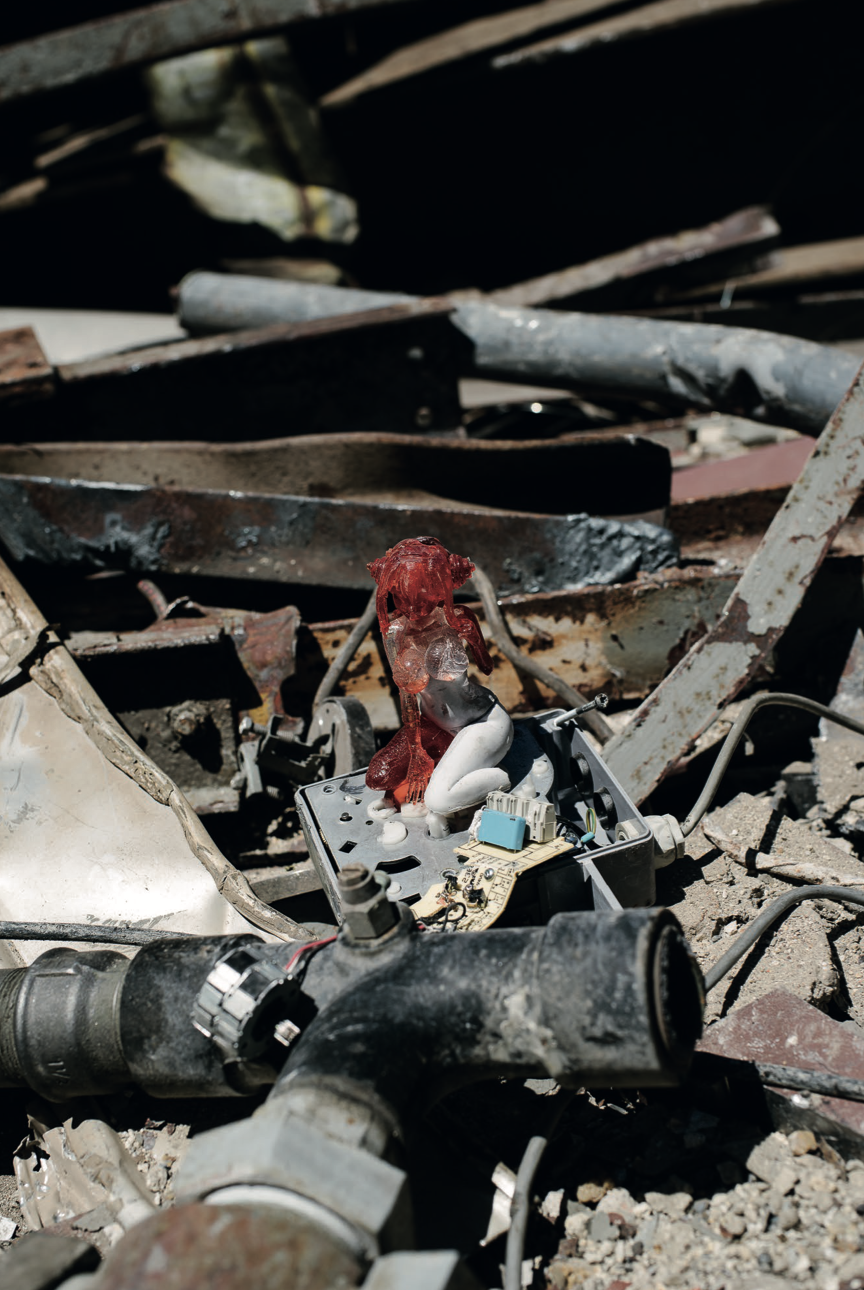


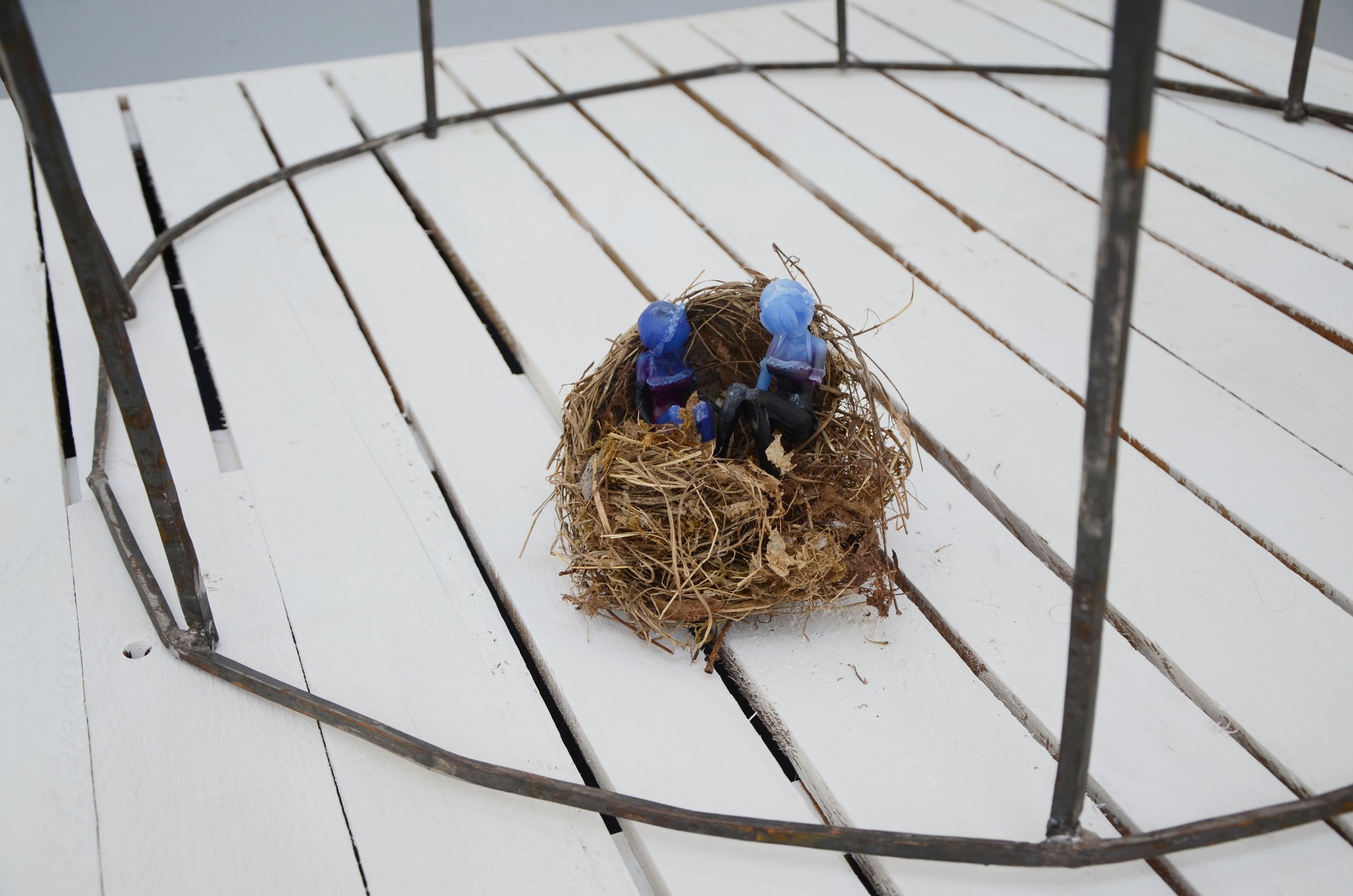

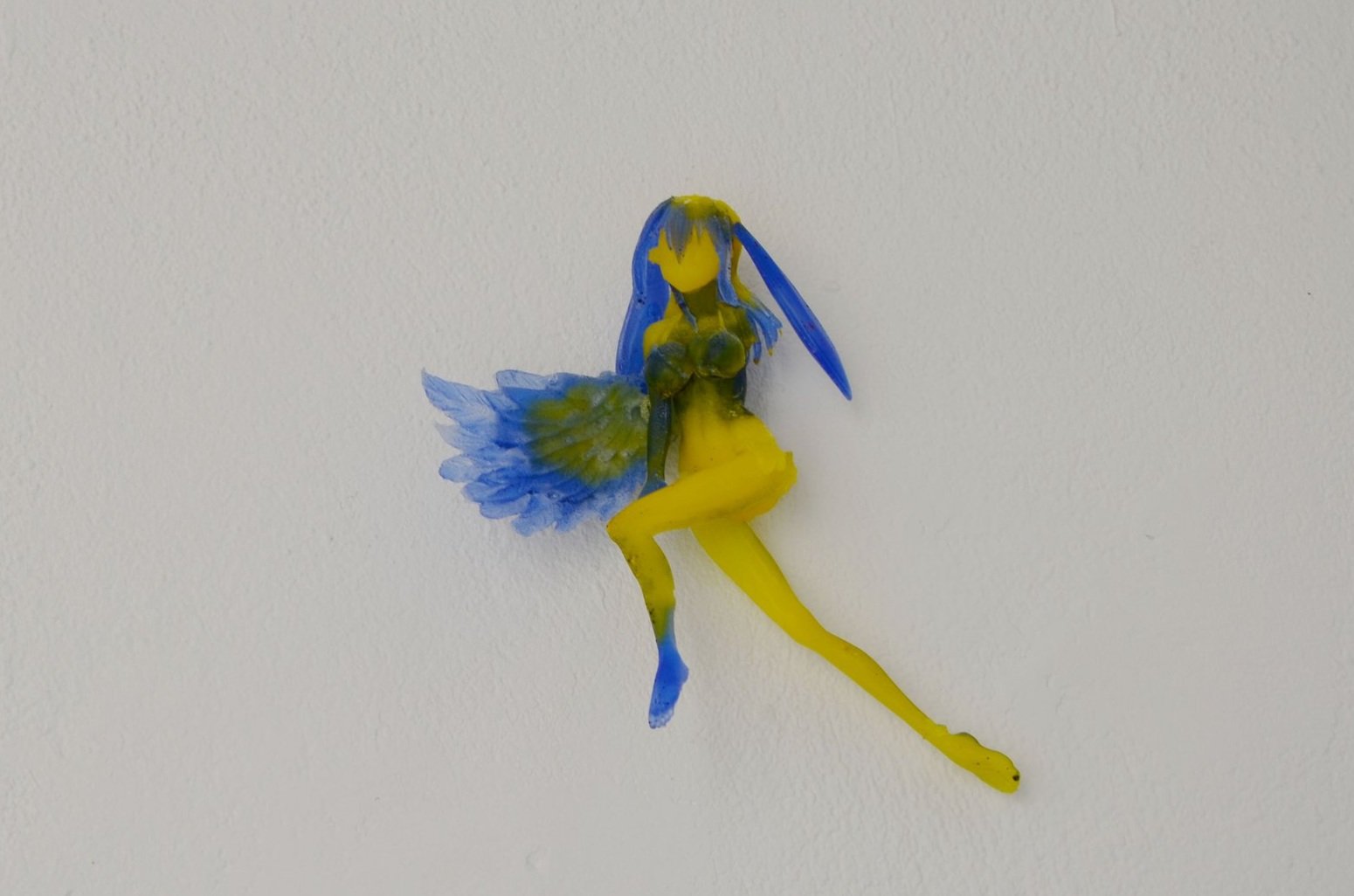
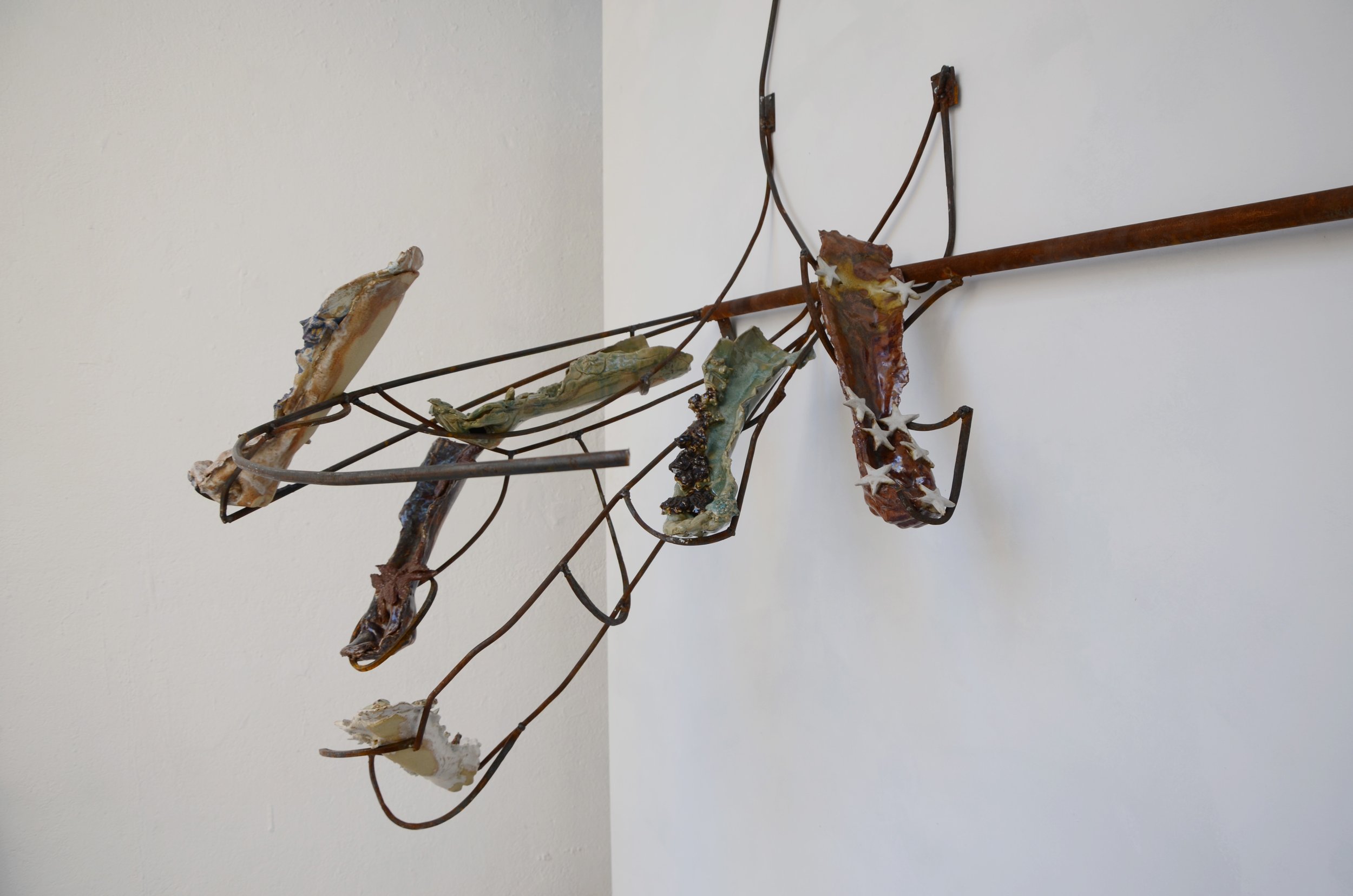

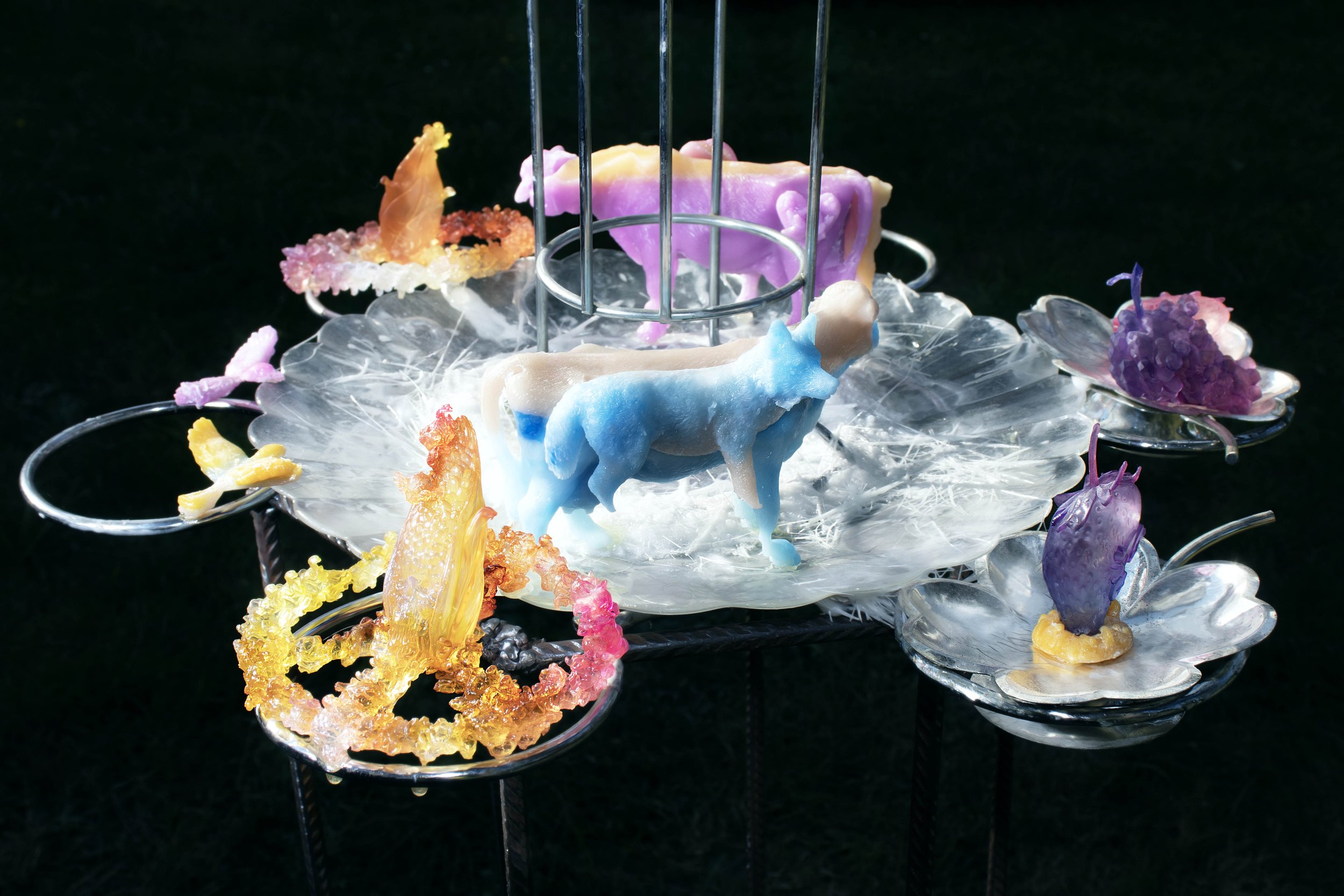
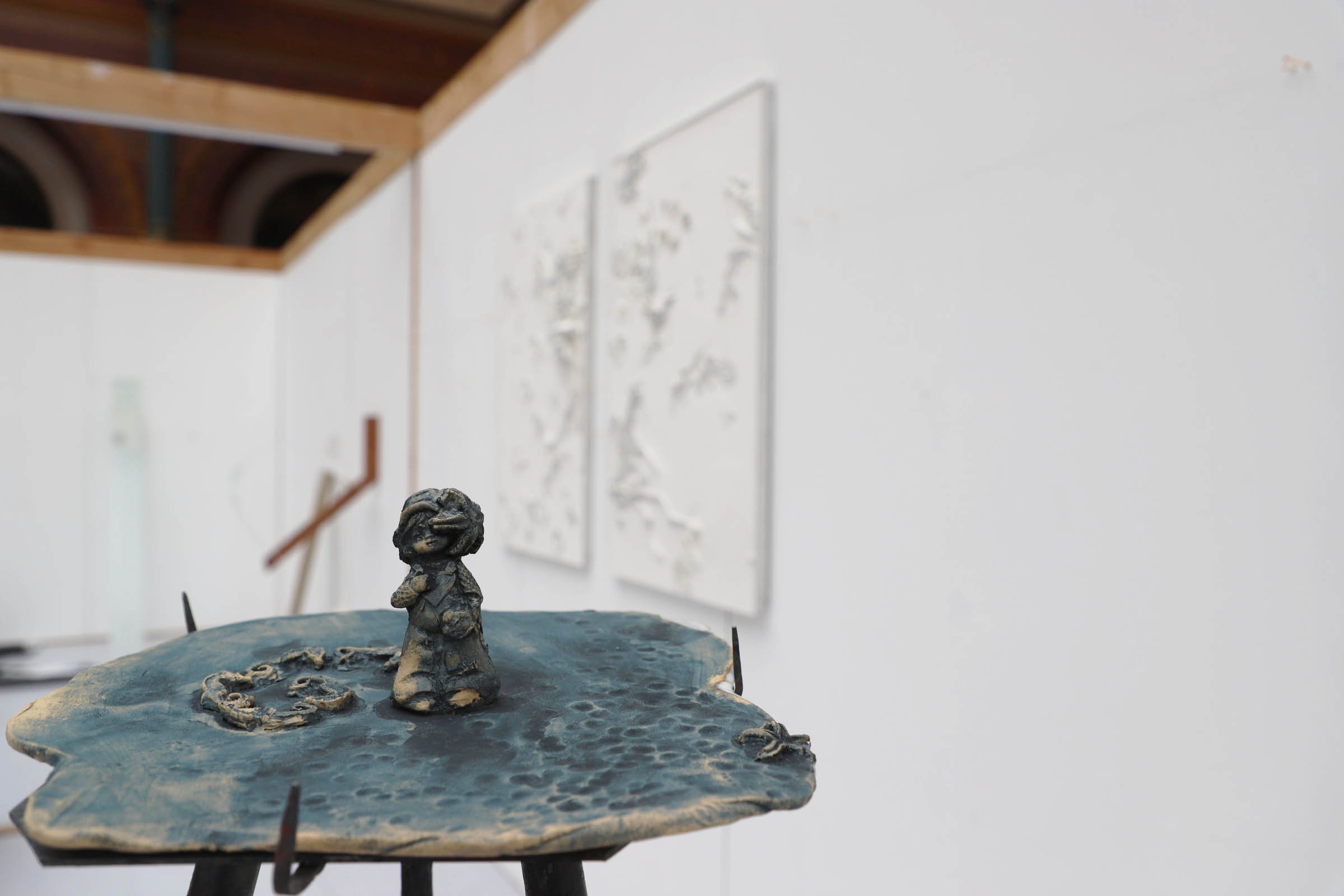

THE INTERVIEW
Clara Duflot
1. Could you share a bit about your background and what led you to start your art practice?
I think it was when I was in high school and I had a kind of intuition about how a lot of jobs will disappear in the future and, so we need to make the choice of ‘career’ very early. I was in high school and I was like, ‘Okay a lot of jobs will disappear,’ and I don’t think it was about IA, or maybe it was another intuition. But I was thinking, for me, I need to make my dream job the most exciting journey it can be. So I started the applications for art schools when I was in high school, really drawing and being very dedicated to it. I entered École Duperré, it’s a school of fashion but my specialty was more into materials and textiles. It was a three-year program and during this journey, I met my friend and an artist, Romain Vicari. I began an internship with him, and he really pushed me into sculpture. So I attended Beaux-Arts in equivalence, and I’m here now, and I will graduate this year
2. What themes does your work explore?
I think my work is really about diversion, like a misapplication, a hijacking. Because I use molding, and for me it’s about taking things in our world from different areas and mixing them together. So it’s like making a sculpture about love with tomatoes. To pick into domestic space, popular culture, the internet, mythology, and to make a kind of collage where every part and everything has its own energy. So it’s very much like a collage, and I want the final result to be something a bit magical. It’s really about our relationships to the other, and the world, and friendship—these little things I think about. And it’s really about loss I think, and love… loss and love and preciousness, like the preciousness of things
3. How has your work evolved over the years, and what has influenced those changes?
I think it’s really about the environment where you grow up, but now I’ve started feeling more awake and I've become more conscious of what I’m doing, because before it was very intuitive. Now I think I’m more aware, and I really try to put everything inside—to put the colours I used before in painting when I was really young and also trying photography. And now I want to try to put all of that inside my work.
Q: Did you grow up in Paris?
Yes, yes, I grew up in Paris.
Q: So you’ve just kind of always been responding to the environment of the city cause that’s where you grew up?
Yeah, yeah, it’s very much about the environment of the city, but I also really grew up in the countryside, and it was a really, really wild countryside, so I'm very into nature. It’s a strong contrast. Last year, I did an exchange for a few months in Tokyo. It was a very intense and surreal moment. It takes time to process. But I think, generally, it’s really about loss and love, because my experience is very static, and this is how, in a static environment, you try to…. maybe open or go deeper and make it more surrealistic and hybrid.
4. Where do you find inspiration for your work?
For the formal part, it’s really a mix of historical things and archaeological things. I’m very sensitive to things like little figurines of ancient and folk culture, and also decorative stuff. I pay attention to pop culture and subculture; I'm very sensitive to things that are very common, references that we can share together.
For the content, I really think about political actuality and the state of the world, the feelings about my life. I actually use a lot of trends I see on instagram. For me, it betrays some dynamics of power I've seen and their artificiality. It’s really about artificiality, I think.
Q: By artificiality do you mean in regard to society or the environment?
I think it's a kind of alienation. I find things interesting when they start to be really weird and kind of punk… like to put things into a state of something bizarre. And you know, on Instagram, sometimes you have weird images that can be very artificial and alienating; like how people make sculptures with crabs or how the skincare routines become very, very intense. Things you can see in consumer culture.
5. Can you walk us through your creative process and how you bring an idea to life?
I think that my creative process is really, really important because I'm very into a plastical approach where the gestures are important too. The materials I use influence the final result I want to give the piece because I use a lot of—I don’t know—it’s not living materials, but materials that will change and that have different states. Before, I was using a lot of latex and resin, and now I'm really into ceramics, and it’s things that have a beginning and an end, things that are very liquid. It's kind of the state of water, it’s mud becoming harder, and catalyzing, or crystallizing with fire. The place of these elements are really important to me because there are surprising sides, and in ceramics, you have the glaze process and the flexibility of the materials. And then, finally, when you see the fire inside your piece… Materials, for me, really have energy, and I want to use this living moment. For the molding, it’s like a game to me to catch things and take the print and make assemblages after. This is how I want to make something disturbing or something I want to see because sometimes I want to see something fun, sometimes something provocative, or a kind of tenderness. So, it’s like a game
6.What is the project you’re most proud of to date?
I’m thinking it's maybe The Goddess of Snack. I love the title. I love it because it's a collaboration, and I love the temporality of the piece. I made this piece with my friend Raphael, who does 3D printing, and we met a long time ago at Duperré. It’s fun when you have the capacity and the skills to make a piece together with also the communication it needs. The temporality was very short, and we had to do this piece for an exhibition in the garden of my friend Dahlia. We did it in summer after my diploma, and it was very quick. We did this piece in Romain’s studio. So, I love the temporality and the presence of others in this piece, and the ideas beyond are a bit dumb and also spiritual… it's like references to the Babel tower and Darwin, and at the same time, food, vintage cookbooks, and goddesses. So, it's like a mix of how humans create their myths and create something bigger than them. I find it's fun, and it’s fun to do this with food and with the like sexualized woman on top. It’s like the cherry on top.
Q: These sexualized women make several appearances in your work, what do they signify for you?
The first girl I had a molding of came from a cake design boutique. It's an hentai figurine, erotic manga, that serves as a decoration for birthday cakes.
I grew up with comics culture, where the representation of bodies is very stereotypical. For me, comics/manga is associated with an exploration of the imaginary, of freedom and power. You find some representations of heroines, who deal very often with their outrageous sexuality—they are here to produce desire. I've always found some humor in it
Also, the collection and miniaturisation of women is very symbolic. For me, it refers to prehistoric figures of fertility, the Venus of Willendorf etc. It's amusing to observe that the mechanism of adoration is still the same. By making the gestures of molding and the multiplication of the same model several times, I replay things from consumption culture. But by their hybridation, the spaces/homes where they live, and their friendship together, they get back the control of their fictional sexuality. Sometimes I say dolls, but it's more like little goddesses to me.
7. Do you see yourself staying in Paris long-term, or are there other cities that inspire you to work there?
The future is really blind, but it depends on the opportunities and possibilities. I think I will change environments someday. I want to work in the countryside or in residency, but it makes me think…
8. What would you like to accomplish in the next few years?
I want to be surprised by life itself and by my practice. I want to be surprised by my practice: the mediums, the thoughts, the economy it needs, and how I will manage to make it happen…
Q:How would you say your practice has already surprised you?
Growing up—I think it’s always surprising for everybody.
9. If there’s one thing you hope people take away from your work, what would it be?
I think I want to give a form of … it's a big world, but a kind of freedom maybe. And I think it's in the colour or in the… I don’t know… I want to give a form of freedom in a sort of punk way, maybe. Like you can use whatever you want, you can mix whatever you want together, and it’ll make something that’s fun and different …. I think this freedom is really important, and right now in the global context also.
And also I really, really think about the others all the time, about my friends. I want to give some tenderness to others. I don’t know if it’s perceived in my work, I don’t think so, but I really think about it, and to have like a form of poetry and love for all the things that are around us. For the birds, the stars, the vegetables, and the people we are intimate with. I think this kind of gratitude to the world is really a treasure for the soul.

